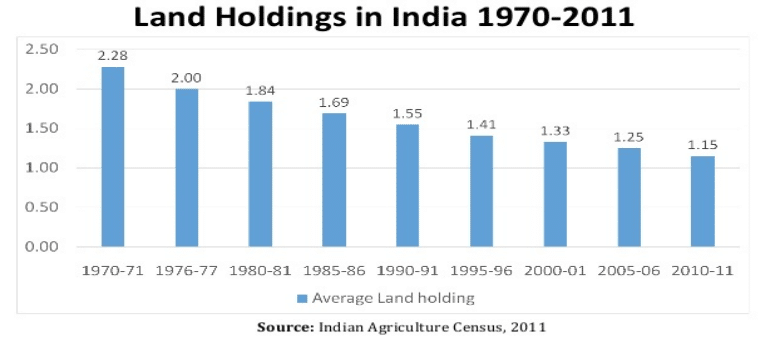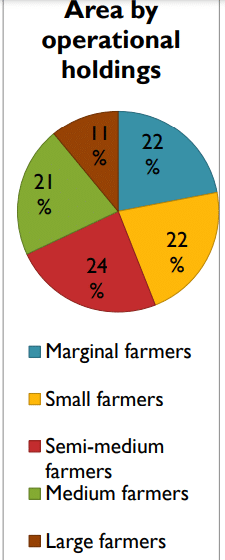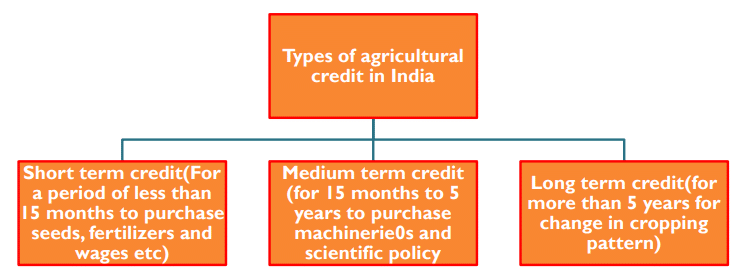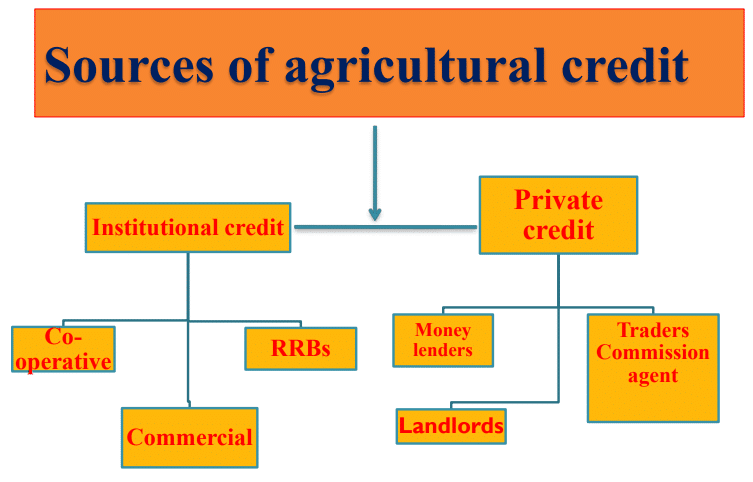In this article, You will read Determinants of Agriculture or Factors of Agriculture – for UPSC IAS.
Determinants of Agriculture
- The agricultural practices, cropping patterns and their productivity are closely determined by the geo-climatic, socioeconomic, and cultural-political factors. In fact, the agriculture of any region is influenced by the following factors:
- Physical factors: Terrain, topography, climate, and soil.
- Institutional Factors: Land tenure, land tenancy, size of the landholdings, size of fields, and land reforms.
- Infrastructural factors: Irrigation, electricity, roads, credit and marketing, storage, facilities, crop insurance, and research.
- Technological Factors: High-yielding varieties (new seeds) introduced in Green Revolution, chemical fertilizers, insecticides, pesticides, and farm machinery.
- These factors individually and collectively have their impact on the cropping patterns and on the level of agricultural development and yield of crops in a region.

A brief account of physical factors & Institutional factors has been given below.
Physical factors
The physical factors which affect the agriculture of any region are terrain, topography, climate, and soil which have varying influences on the agricultural productivity of a region.
It is worth mentioning that these factors do not work in isolation but the agricultural activity of a place is the product of combinations of different physical factors. The various physical factors are discussed below:
Terrain, Topography, and Altitude
- The agricultural patterns are strictly dependent on the geo-ecological conditions such as terrain, topography, slope and altitude.
- For example, while paddy cultivation requires levelled fields in order to have standing water, the tea plantations perform well in the undulating topography in which water does not remain standing, standing water damages tea plantations. Orchards of coconut, are found at low altitudes, preferably closer to sea level. While the apple orchards in the tropical and sub-tropical conditions perform well at an altitude above 1500 metres above sea level.
- However, cultivation of crops is rarely done 3500 m above sea level in the tropical and subtropical latitudes. Reason for this is the highly rarefied air, low pressure, low temperature, and shortage of oxygen at high altitudes which are serious impediments not only in the cultivation of crops but also in keeping dairy cattle.
- The soils of high mountainous tracts are generally immature. The soils at such altitude are not well developed due to the slope which induces erosion of the soil making it thin and non-conducive for agriculture.
- Topography affects agriculture as it relates to soil erosion, difficulty of tillage and poor transportation facilities.
- Mechanization of agriculture depends entirely on the topography of the land. On rough, hilly lands, the use of agricultural machinery is impossible.
- The topographical features also affect the distribution of rainfall. Normally, the windward side gets more rainfall than the leeward side. For example the windward side of Western Ghats receives 250 to 300 cm rainfall whereas the leeward side receives 75 to 100 cm rainfall.
- The amount of rainfall received in a region determines the selection of crops to be sown like we can grow jute in West Bengal but not in Rajasthan due to the variation in rainfall.
- Apart from altitude, the aspects of slope also determine the agricultural activity in a region. Aspect of slope means weather the slope is sun facing or not and how steep the slope is. The steeper the slope is, the less conducive it is for agriculture. On steep slopes terrace farming is practiced.
- The nature of the surface also affects agricultural activities. The gullied land is the least conductive for cropping. The gullied lands are highly eroded and are deficient in key nutrient resources required for agriculture. For example, the Chambal ravines in Madhya Pradesh, Rajasthan, and Uttar Pradesh have put over thousands of hectares of good arable land out of agriculture.
Climate
- Of all the physical factors, the climate is one of the most significant determinants of agricultural land use and cropping patterns. All forms of agriculture are controlled largely by temperature.
- Areas deficient in heat are deficient in agriculture. For that is one element of climate that man has not been able to create at economic costs on a large scale. Temperature determines the growth of vegetation through determining the length of the vegetative period. Successful agriculture, therefore, requires a fairly long summer.
- In lower latitudes where the winters are never too cold to arrest the growth of vegetation, practically the whole year is the growing period, and the agricultural operations are timed according to the supply of rainfall.
- In higher latitudes, however, the shortness of summer is compensated by the longer duration of the day. The total amount of heat received is enough for the ripening of crops.
- The climate of the region which is important for the growth of plant includes the following:
i. Temperature
- The crops to be grown, their patterns and combinations are closely controlled by the prevailing temperature and precipitation conditions. The agricultural scientists have proved that each crop has a specific zero temperature below which it cannot be grown. There is also an optimal temperature in which the crop is at its greatest vigour. For example, wheat can be grown in Punjab in the month of November-December due to cool climatic conditions, it cannot be grown in Kerala at the same time, and similarly, apples can be grown in Himachal Pradesh and Jammu and Kashmir but not in Chennai.
- For each stage of crop life i.e. germination, foliation, blossoming or fructification a specific zero and optimum can be observed in temperature.
- The upper limit of temperature for plant growth is 60 degrees C. Under high-temperature conditions, i.e. at above 60 degrees C, crops dry up if the moisture supply is inadequate. In contrast to this, the chilling and freezing temperatures have a great adverse effect on the germination, growth, and ripening of crops.
- Crops like rice, sugarcane, jute, cotton, chilli, and tomatoes are killed or damaged at the occurrence of frost. The minimum temperature for wheat and barley is 5 degrees C, maize 10 degrees C, and rice 20 degrees C.
- The impact of temperature on cropping patterns may be seen from the fact that the northern limit of the regions in which date palm bear ripe fruit coincides almost exactly with the mean annual temperature of 19 degrees C.
- The essential factor in the limit of grape orchards seems to be temperature. Grapes ripen only in those countries in which the mean temperature from April to October exceeds 15 degrees C.
- Crop like winter- wheat and barley perform well when the mean daily temperature ranges between 15 degrees C and 25 degrees C. Contrary to this, tropical crops like cocoa, coffee, spices, squash, rubber, and tobacco require over 18 degrees C temperature even in the coldest months, while crops like wheat, gram, peas, lentil, potato, mustard, and rapeseed require a temperature of about 20 degrees C during the growth and development stage and relatively higher (over 25 degrees C) during the sowing and harvesting periods.
- Thus from the above discussion, it can be seen that each crop requires different conditions of temperature and precipitation during the different stages of its growth like germination, maturity, harvesting, etc.
ii. Moisture
- All crops need moisture. They take water and moisture from the soil. This moisture may be available from the rains or from the irrigation system.
- Within wide temperature limits, moisture becomes more important than any other climatic factor in crop production.
- There are optimal moisture conditions for crop development just as there are optimal temperature conditions. The excessive amount of water in the soil alters various chemical and biological processes, limiting the amount of oxygen and increasing the formation of compounds that are toxic to plant roots. The excess of water in the soil, therefore, leads to stunted growth of plants. The problem of inadequate oxygen in the soil can be solved by drainage practices in an ill-drained tract.
- Heavy rainfall may directly damage plants or interfere with flowering and pollination. Cereal crops are often lodged by rain and this makes harvest difficult and promotes spoilage and diseases. Heavy rainfall at the maturity of wheat, gram, millets, oilseeds, and mustards causes loss of grain and fodder. Indian farmers all over the country have often suffered on account of the failure of rains or fury of floods.
iii. Drought
- Drought has devastating consequences on the crops, their yields, and production.
- Soil drought has been described as a condition in which the amount of water needed for transpiration and direct evaporation exceeds the amount of water available in the soil. Drought damages the crops when plants are inadequately supplied with moisture from the soil.
- The drought-prone areas of India lie in the states of Rajasthan, Gujarat, Madhya Pradesh, Chhattisgarh, Jharkhand, Maharashtra, Andhra Pradesh, Karnataka, Tamil Nadu, Odisha, Bundelkhand (U.P.), Uttarakhand, J&K, southwest Punjab, and Haryana.
- In the areas where the average annual rainfall is less than 75 cm, agriculture is considered a gamble on monsoon. In 2009, the erratic monsoon resulted into drought in more than 200 districts of the country. Vidarbha region of Maharashtra has a high incidence of farmer suicides due to the drought condition which results in the failure of crops, this is basically due to the inadequate irrigation facilities in the region.
- The incidence of drought and its intensity can be determined from the annual seasonal and diurnal distribution of rainfall. Moreover, different plants have different moisture requirements. In the drought-prone areas of India, dryland farming is practiced, while in the more rainfall recording regions, intensive agriculture of paddy crop is a common practice.
iv. Snow
- The occurrence of snow reduces the ground temperature which hinders the germination and growth of crops.
- Land under snow cannot be prepared for sowing because of permafrost.
- Melting of snow may cause hazardous floods in the summer season, affecting the crops, livestock, and land property adversely.
v. Winds
- Winds have both, direct and indirect effects on crops. Direct winds result in the breaking of plant structure, dislodging of cereals, fodder, and cash crops, and sheltering of seed- heads. Fruit and nut crops may be stripped from the trees in high winds.
- Small plants are sometimes completely covered by windblown dust or sand.
- The indirect effect of winds is in the form of transport of moisture and heat in the air. In fact, the movement of winds increases evaporation and transpiration, which can make plants devoid of a sufficient amount of moisture.
Soils
- In agricultural operations, the soil is probably the most important determining physical factor. It determines the cropping patterns, their associations, and production.
- The fertility of the soil, its texture, structure, and humus contents have a direct bearing on crops and their productivity. In general, the alluvial soils which are found in the river valleys are considered to be good for wheat, barley, gram, oilseeds, pulses, and sugarcane; while the clayey loam soil with fine grains found in the GangaBrahmaputra deltaic regions gives a good harvest of rice and Jute.
- Black soil is known for cotton in Maharashtra, and sandy soil for guar, pulses (green gram, black-gram, red-gram, etc) in Rajasthan.
- The saline and alkaline soils are useless from the agricultural point of view unless they are reclaimed by chemical fertilizers and biological manures and fertilizers. For example the soil in Punjab and Haryana.
Institutional factors
Land Holdings
- The average size of landholding has been continuously decreasing on account of an increasing number of landholders From an average of 2.28 hectares in 1970-71, it went down to 1.15 hectares in 2010-11.

- In India, More than 82 percent of the farmers belong to the small and marginal farmers category and these farmers have less than 2 hectares of land (GOI, 2011).
- “Such tiny holdings by the large majority of the farmers are neither viable nor sustainable for a country with billion-plus mouths to feed and the continuous decline in the average size of land holdings also creates a serious problem.
- In addition to this, fragmentation of landholdings, lack of off-farm occupations, and inheritance laws of an equal division of property among heirs, leading to the division of land into small blocks.
- However, these small and marginal farmers have a poor economic base. Consequently, it has an adverse effect on the growth of the agriculture sector.
- Thus, this high fragmentation of land restricted and hindered the dissemination of modern technology in agriculture.

Agricultural Credit
- Credit is the backbone of each sector of the economy. Credit is one of the vital prerequisites of the farmers, which facilitate them to meet the investment as well as working capital requirements.
- Like other sectors, the availability of credit for the agriculture sector must be easy, adequate, and timely. Despite a large network of Rural Financial Institutions (RFIs), a large portion of the rural population is continuously neglected by the formal banking sector in India.
- In India due to the long gestation period, lack of trained technical staff to identify the potential activity in this field, poor eligibility, and security problems are some of the reasons behind insufficient credit flow to the agriculture sector.



Excellent Sir ji 🙏🙏🙏
Thanks, Mohit
Superv sir ji
thanku so much sir you have done a great job.
🙂
Aise notes dalte rho
Join the Discussion
Please sir write a easy determinants of agriculture land use – physical, economic,social and technological, land holding and land tenure system